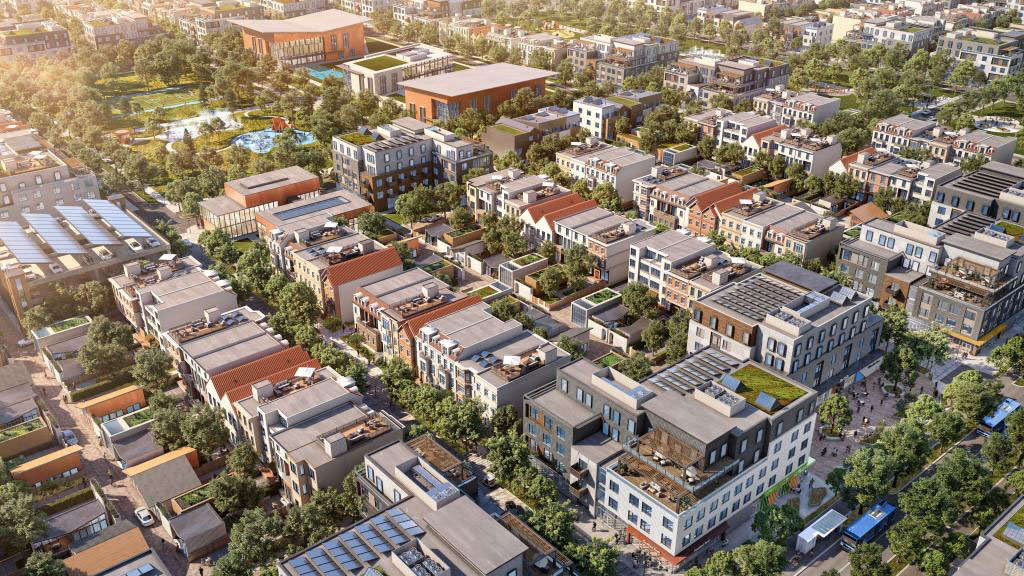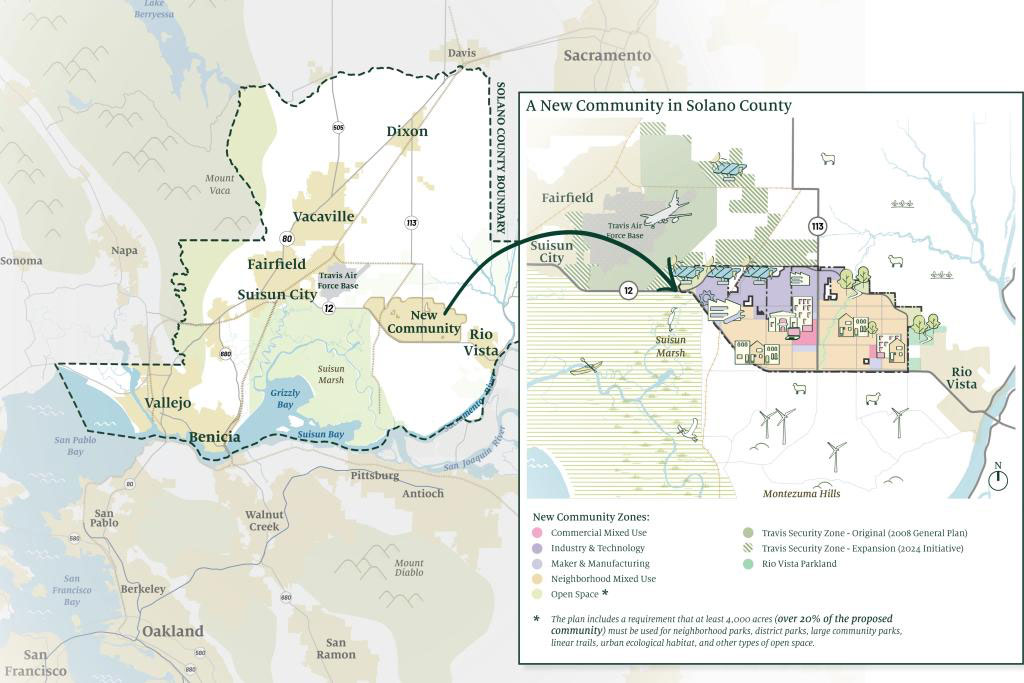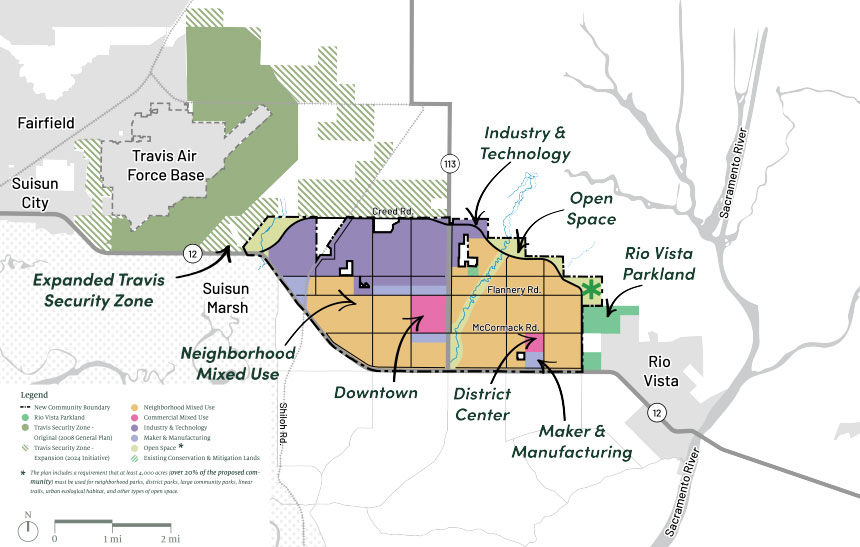
New walkable city planned in California
In one of the most ambitious greenfield development proposals in a century, wealthy tech investors are seriously planning a walkable city of 400,000 people northeast of the San Francisco Bay Area.
California Forever recently released plans that have garnered national coverage in the last week. The group quietly purchased $1 billion in farmland in Solano County, under the radar of public officials. The plans cover 18,600 acres, or 29 square miles, and aim for a density similar to the City of Boston. About 20 percent of the land would be preserved as open space.
Before California Forever can break ground, it must win public approval in the county through a November ballot initiative. The highly controversial proposal would nearly double the county’s population over many decades, occupying about 3.5 percent of the land.

The investors are dangling substantial incentives to win over voters, including investing $200 million in nearby downtowns and $400 million for down-payment assistance for homebuyers. By the time the city achieves a population of 50,000, California Forever aims to create 15,000 jobs.
The group is committed to principles of traditional town planning and uses the language of New Urbanism, but promises to do it at a larger scale that allows for creating a fully functioning, independent city. The website states:
“Urban theorists like Leon Krier have proposed new cities as a way to accommodate growing populations by creating cities of manageable size and scale.
“The new town tradition became more influential in England and Western Europe than it did in the US, but we see its direct influences here on people like Andres Duany (leading theorist of New Urbanism) and Peter Calthorpe (who coined the concept of "transit-oriented development" in the early 1990s). But the experiments of Calthorpe and the other New Urbanists in the United States have all been for much smaller population sizes than what we are talking about with our project.”

New urbanists have built large projects, including Daybreak in South Jordan, Utah, Mueller in Austin, Texas, and Stapleton in Denver. California Forever is an order of magnitude bigger.
In-house planners and a team of consultants, including SiteLab (urban design), CMG (landscape architecture), Fehr & Peers (transportation), ENGEO (geotech and hazmat), and CBG (civil engineering), EKI (water), are designing the project. California Forever’s head of planning, Gabriel Metcalf, led the San Francisco Bay Area Planning and Research Association (SPUR) for 13 years. He was the CEO of Committee for Sydney, a think tank in Sydney, Australia, for four years.
Metcalf brings a strong urbanist philosophy to the team. “We’re not proposing a utopia. We’re just proposing a city. I’m not arguing this can solve every problem. But I would argue that this is another tool, and it could help,” he told The Guardian. From the website:
“We are attempting something that has not been done in a century - to create a new community that has density, mixed use, public life, and scale. … The inspiration for the California Forever approach to city planning is not so much New Urbanism as it is the early plans of the 19th century American cities. The New York Commissioners' Plan of 1811 (started in 1807) is perhaps the most important precedent.”
The “key elements” of plan come right out of the New Urbanism playbook:
- Compact urban form.
- Complete neighborhoods anchored by local shopping streets.
- Public spaces that foster community.
- Streets for people.
- High quality public transit.
- A smart parking strategy.
- Mix of housing types and a small parcel fabric.
The latter includes: “Row houses, between two and four stories tall - a beloved building type in cities all over the world, which has proven its value for hundreds of years. Think San Francisco Victorians, Brooklyn or Chicago Brownstones, or Sydney Terrace Houses. Row houses can be subdivided into multiple units, and they can adapt over time as the needs of the owners change. Apartment buildings - located primarily on the short side of the block. They will have a range of unit sizes, from small to large. ADUs—accessed off the rear alley, wherever the owner wants one. It could be rented out, or used by a family member.” The website goes into details about a “form-based code.”
California Forever is not the first wealthy tech investor group to dream of creating a new urban city. We reported on Telosa, a city of 5 million planned for a tech billionaire, but that project didn’t have a specific site—therefore, the plan was theoretical. On the other end of the scale, tech investors built Caldesac—a car-free development on 15 acres in Tempe, Arizona, and one of the nation's most watched new projects. The low-rise, compact development could provide a model for some of the housing built in Solano County, if California Forever gains approval. It meets the density requirements that California Forever has put forth—at least 20 units per acre of neighborhood fabric.





